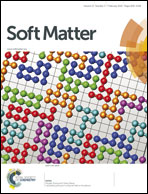Smectic layer instabilities in liquid crystals
Abstract
Scientists aspire to understand the underlying physics behind the formation of instabilities in soft matter and how to manipulate them for diverse investigations, while engineers aim to design materials that inhibit or impede the nucleation and growth of these instabilities in critical applications. The present paper reviews the field-induced rotational instabilities which may occur in chiral smectic liquid-crystalline layers when subjected to an asymmetric electric field. Such instabilities destroy the so-named bookshelf geometry (in which the smectic layers are normal to the cell surfaces) and have a detrimental effect on all applications of ferroelectric liquid crystals as optical materials. The transformation of the bookshelf geometry into horizontal chevron structures (in which each layer is in a V-shaped structure), and the reorientation dynamics of these chevrons, are discussed in details with respect to the electric field conditions, the material properties and the boundary conditions. Particular attention is given to the polymer-stabilisation of smectic phases as a way to forbid the occurrence of instabilities and the decline of related electro-optical performances. It is also shown which benefit may be gained from layer instabilities to enhance the alignment of the liquid-crystalline geometry in practical devices, such as optical recording by ferroelectric liquid crystals. Finally, the theoretical background of layer instabilities is given and discussed in relation to the experimental data.


 Please wait while we load your content...
Please wait while we load your content...